https://www.youtube.com/watch?v=pThu4C_hiWg
15 Mistakes Most Beginners Make Cooking Pasta at Home
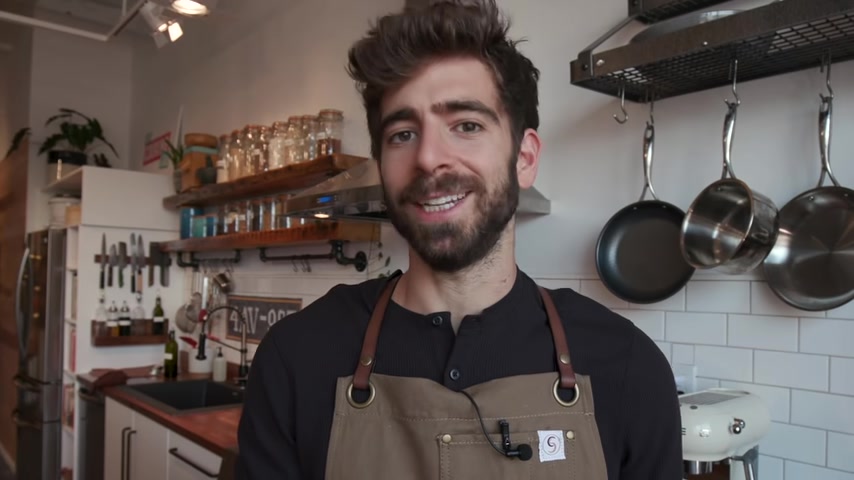
So my tomatoes for this recipe to my tin of whole plum tomatoes .
I am going to add about a tablespoon or so of tomato puree .
Now , there's a reason for this .
I want that intense tomatoey flavor and sometimes these tinned tomatoes , they need a little bit of extra help .
So I'm gonna add a tablespoon or so of tomato puree or tomato paste .
If you're in the US this now all goes into a food processor and I'm gonna blitz this up .
So I get a super smooth and silky tomato sauce to this recipe .
So lid on and let's get Blitzen .
OK .
Oh A lot of noise .
And you don't have to do this step , particularly if you like chunky tomato sauces .
But this results in the silt you will ever come across .
So I have that ready to go .
My garlic is just turning that little touch golden and this is the point where you need to get it to and you don't want to go further than this .

It's good , but it needs a touch of salt and funny enough .
You know , I know this sounds like a really obvious thing to say .
But in cooking that little bit of salt can mean all the difference between a good tasting dish and a bad tasting dish .
So make sure you check your seasoning as you go .
This is good to go .
At this point , I'm gonna turn off the heat on my pasta which is cooked and now it's just a case of getting this all involved in the one pan .
Grab up that pasta , transfer it straight into that hot sauce .
A lot of people wonder what that point of difference is from really good pasta dishes .
And often enough it comes down to well seasoned pasta , but also the use of a little bit of that starchy pasta water .
And that's why in this case , I'm not draining the pasta .
I'm taking it from one pot to the next , taking in a little bit of that starchy water alongside .
It will , will be the difference .
Give it all a good toss .
You want to get that tomato sauce involved .

Look at that only a few minutes and you have pasta beauty all in one pan .
Really gorgeous .
Oh , yeah .
Oh , baby .
Oh , yes .
That is looking fantastic .
Right .
Let's serve this up .
This looks really , really wonderful now and all you got to do is stick this straight into your plate .
I mean , you need no more and the brilliant thing about this is just how few ingredients it takes to create beautiful pasta perfection a done in minutes in the time it takes to cook the pasta and then a last little touch of pecorino just over the top .
Give it a swirl on your fork .
Get it coated .
Have a little moment .
Feel a little bit romantic .
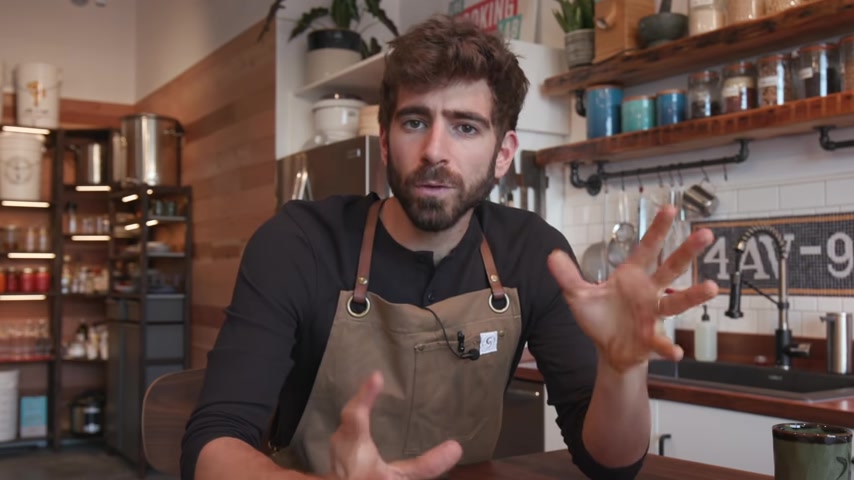
One of the first pasta sauces I ever learned to make and one that I come back to time and time again , if you have never made any pasta recipes before , this is the one to start with .
It's the sort of basis of some great Italian cookery and it is so , so delicious .
Best of all , you can make it in minutes and you probably already have the ingredients in your store cupboard .
So go try this recipe .
I will leave a link in the box below which will bring you to my website where all the details are there .
Of course , let me know what you think of this fantastically simple little recipe .
And what is the first thing you've ever cooked ?
I'd love to know if it was a pasta dish like this .
Click that like button .
Share this with a friend who loves pasta and of course , subscribe to this channel for lots more delicious recipes just like this one .
Until then my friends see you soon .
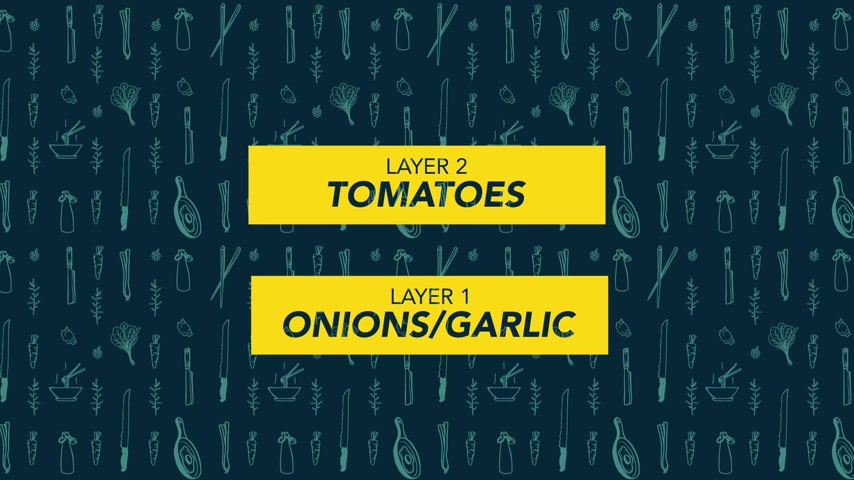
So you don't want a ton of extra ingredients in there and you don't want to see regular wheat flour .
That's a good sign that your pasta is no good .
Tip number two is developing layers of flavor .
When you're trying to make a really good pasta , you can't just dump everything in and cook it down and think it's gonna be tasty .
You have to focus on each layer , building off of the last layer , think about it like blocks .
We have the first layer which is the onions and the garlic , which are gonna require their own technique .
Then of course , building on top of that , we have the tomatoes which require their own amount of time to develop flavor .
Then the final block , the final layer of flavor is the cheese and the herbs to really bring the pasta dish together .
Really the only prep for this entire pasta dish is taking care of your veggies .
So I've got an onion here .
I'm gonna slice this in half and I'm gonna cut little dic .
So I just go down the onion like this , turn it and then cut it the other way , really simple .
And then for the garlic , I'm using two cloves of garlic .
Totally a preference thing .
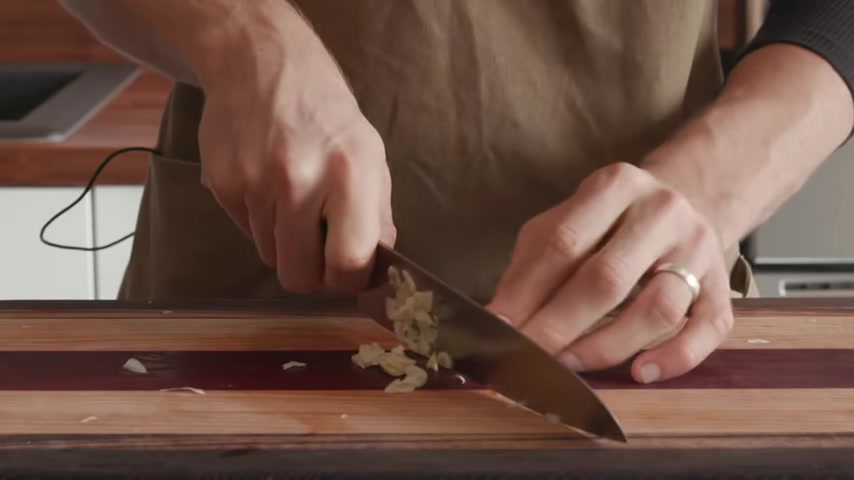
Pastor pastor , pastor a

So three parts water to one part pasta because that pasta is really going to expand when it cooks and you don't want it expanding over the water line .
All right .
So we're ready to cook our sauce .
And tip number four is getting the right amount of oil or fat in your pan do not skimp out on this step .
If you go to Italy , you'll see when they're making pasta they load in that olive oil because olive oil isn't that bad for you .
It's just press , it's like olive juice basically .
But we have a thing , at least in the US against fats , we're scared of fats .
But if you don't use enough fat in your dish , you're not gonna properly be able to caramelize your onions .
You're gonna either burn them or they're gonna dry out and it's no good with your pan on a medium heat .
You're gonna add in your onions , your garlic and your chilies , and you're just gonna slowly start cooking them in that oil .
And you can see right there all of those ingredients , they're , they're swimming in the olive oil , there's plenty of olive oil there .
So they're nice lubricated .
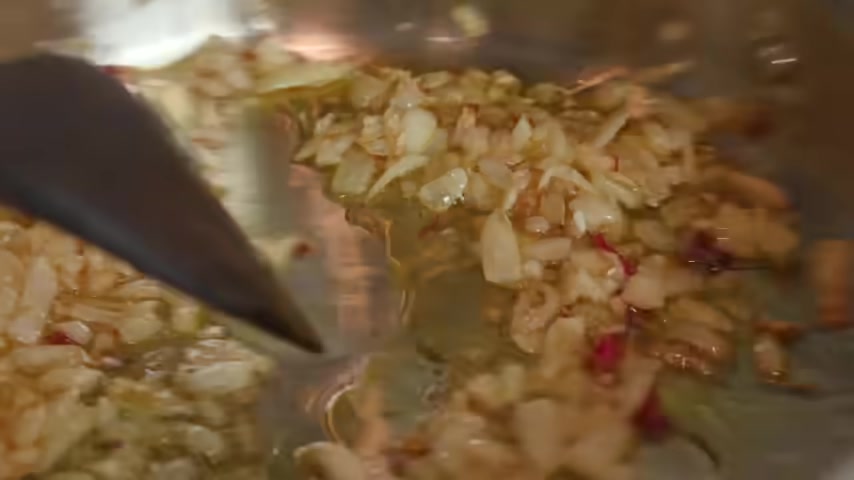
You're basically cone your onions .
It's a slow cooking process in that oil first going to sweat , they're gonna get translucent and then over time , the sugars and the onions are going to caramelize and they're going to turn a darker color but not a burning .
It takes time to get to that level and that's where we are developing a layer of flavor .
The sweetness that you're bringing out in all of these aromatics are really going to enhance your overall sauce .
So now that your aromatics are slowly cooking away .
Tip number six is adding the proper amount of salt .
So we're adding the salt to the aromatics and we're seasoning this layer of flavor right here in our sauce .
We're also gonna add some salt to the pasta water .
And this is a classic debate .
Do you add salt to your pasta water ?
I find that it's great because it's going to add a layer of flavor to your actual noodles .
So really just add a few pinches of salt to your water and you'll be good to go .

Here we go every time I pop one of these open .
Oh the freshness .
Ah So tip number seven is intensifying your flavor .
If you look at the tomato sauce right here , it's super watery , which actually isn't a bad thing because we're gonna reduce that over time .
As we reduce the sauce , the water cooks out and it intensifies the flavor of the sauce and also gives it time to develop the flavors for everything to meld together .
So my tomatoes naturally had a lot of liquid in there .
But if the tomatoes you buy from the store , if they don't have a lot of liquid , you can always add a cup of water .
So you have room there to reduce your sauce .
I'm just keeping the sauce on a nice low simmer .
You can see those bubbles just bubbling away .
We're not boiling the sauce but there's definitely some action there .
So just keep it even .
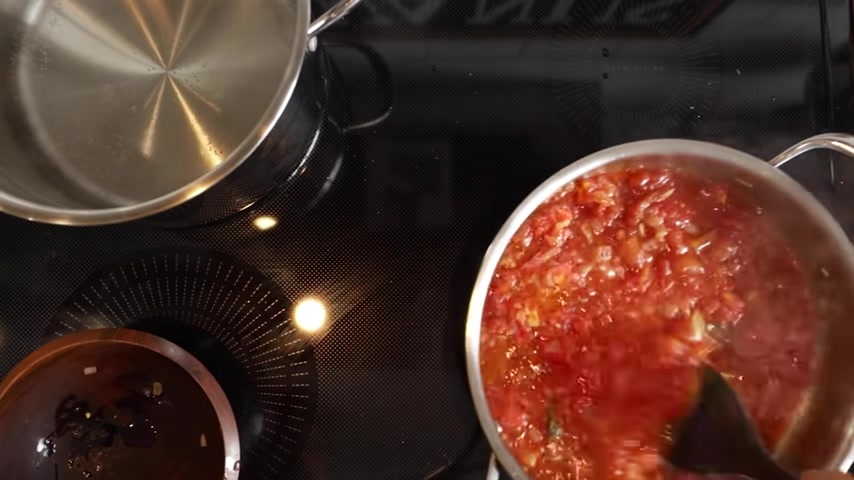
And if you want to at this point , you can mash up your sauce a little more .
That's another bonus tip .
The consistency is completely up to you .
If you wanna blend your sauce , if you want it super creamy , that's totally fine .
I like my sauce a little chunkier .
But as it cooks , those tomatoes are gonna continue to break down and get a little smoother with .
So at this point , I add in some dried oregano because oregano can handle a longer cook time .
It's gonna infuse over time .
Whereas the more delicate herbs like basil , I'm gonna save that for later on to just perfume the dish .
Now that the pasta sauce is cooking away .
Tip number eight is adding more to your pasta and this isn't necessarily traditional .
If you go to Italy , generally a marinara type sauce is really simple , but you can always add extra veggies or meat to really bulk it up .
And what I like doing is just taking some fresh greens .
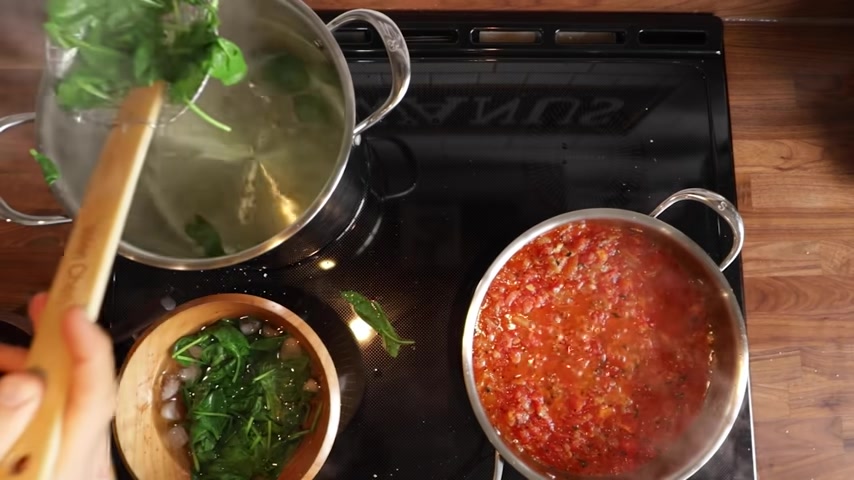
In this case , I have some spinach , but you can use kale or charred , whatever you have .
And I just give them a quick blanch in the boiling pasta water just for about 30 seconds to a minute , which is going to take out a bit of the bitterness , but it's still going to retain a lot of the freshness of the greens .
And then I'll just put those right into an ice bath and reserve those for once the sauce is done .
So tip number nine is getting that timing down between the noodles going into the sauce .
So right now , the sauce is cooking away and when I look at it , there's still little more liquid to be reduced .
So it's gonna take around 10 minutes and the box of pasta it says about 8 to 10 minutes to cook .
Now , I don't recommend going exactly off the box of pasta .
It's always best to taste it to see if it's done .
But the instructions will definitely give you a rough estimate .
So I'm gonna dump in all of the pasta to the boiling water knowing that it's gonna take around 10 minutes before it goes into the sauce .
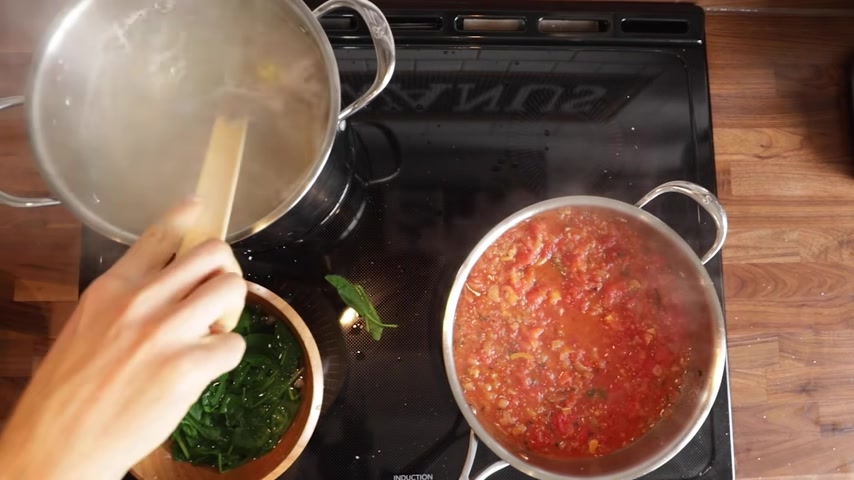
Now that our noodles are on the heat , we've got time to really refine our sauce and get it perfect .
And tip number 10 is keeping all of the seasonings in mind .
So I'm gonna add just a little bit of salt at this point because it's reduced .
I can confidently add salt knowing that it's not gonna get that much saltier from the reduction process .
But remember we are adding the Parmesan cheese to this .
So that's going to add another layer of saltiness .
So I'm not adding too much , just a taste .
So our noodles are boiling away there looking really good .
You can see timing is pretty good .
We aren't quite there .
It's still a little liquidy , but you can already tell that it's transformed a bit .
It's starting to get more saucy .
You see that we want one consistent sauce texture .
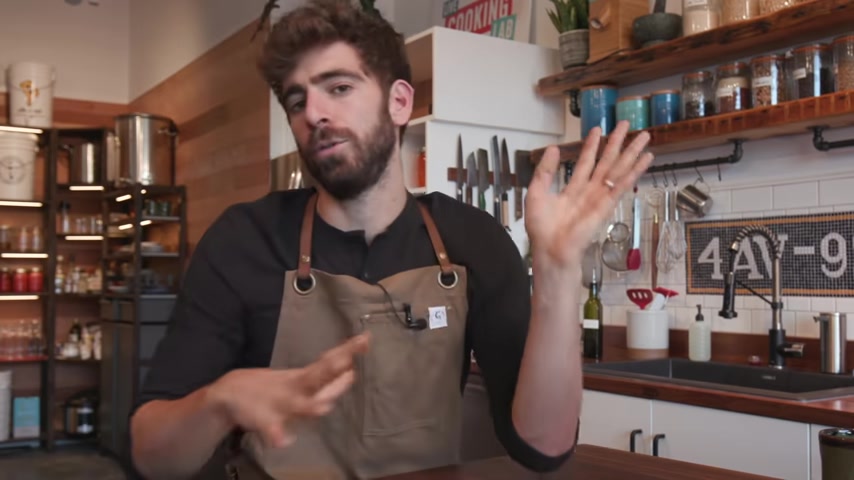
So our noodles have expanded .
They're , they're looking good .
They're just about done .
But how do we actually know when to put them in the sauce ?
You always hear that term ?
Al Dente .
Everyone wants their noodles .
Al Dente .
But what does that actually mean ?
Is the question ?
Well , I've got a trick that I find works great .
So , pull out one of your noodles from your pasta water and make sure it's cool enough to just give it a bite .
And if you see a little bit of starch in your noodle , that means your noodles are not cooked through .
Now , I find that the perfect time to pull your noodles is when you bite into that noodle and you don't see that starchy ring on the inside , it's completely cooked through , but there's still some chew to your noodle .
It's not completely soft .
That to me is the perfect time to put your noodles into your sauce .
All right , we're gonna give it a final test right here .
Bite into this .
There you go .
The inner white starch is completely gone .
So it's cooked through , but it's still al dente .
It's just a little tough .
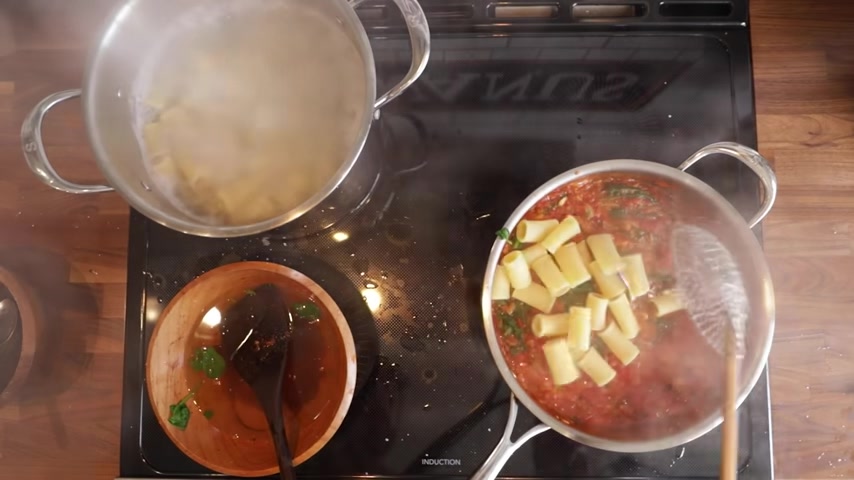
It's not completely tender , which is the perfect time to add to our sauce .
Now , the reason we put our noodles into the sauce just a little early is tip number 12 .
Probably the number one thing people screw up on making homemade pasta , which is they don't infuse the noodle with the sauce , you're trying to bring these two elements together .
So they become one and a lot of people just put cooked noodles into the sauce and they think it's done .
But by putting the noodle and just before they're fully cooked , it gives us time to really cook the sauce into the noodles .
So we're just gonna keep cooking that on a nice low heat and just stirring that and stirring that until the sauce infuses .
See right here is where most people stop .
When it comes to pasta , they put it in there , they think it's done .
But you can see these noodles , they're , they're not even coated .
The sauce slips right off .
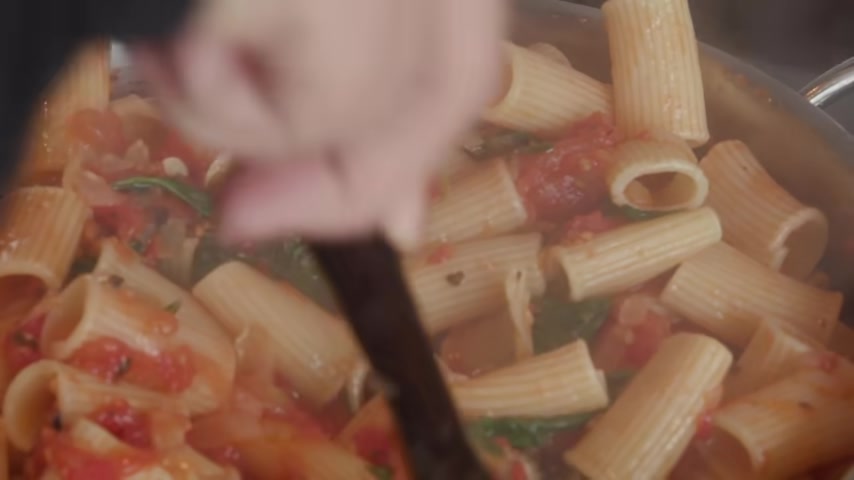
So you can see in the next few minutes all of that sauce , all that liquid that's going to thicken up with the pasta water , the starchiness of the noodles and incorporate and become one with the pasta , which brings us to tip number 13 .
That starchy water .
That is your friend .
All of the water that's coming off your noodles .
It's loaded with starch and when it heats up , it's gonna thicken up that sauce .
So just keep stirring on a low heat and eventually your sauce is gonna get nice and thick from all of that starch .
Our pasta is looking great and the final step is to add that last layer of flavor , which is some delicious salty Parmesan cheese , plus a little bit of fresh basil .
And at this point the basil is really just there to perfume the entire dish .
You're not trying to overcook the basil .
It's very delicate .
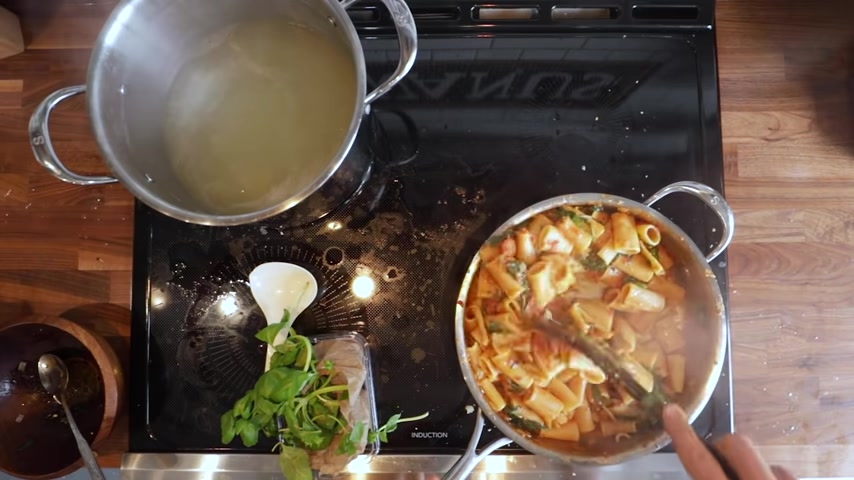
So you just want to stir that in for another , in it and you are ready to go .
But if you taste your pasta at this point and you still think it's a little under , it's a little chewy tip .
Number 14 is just pop a lid on your pasta and just let it sit there for a few minutes and the residual heat and all of that steam is going to continue to cook that pasta and just get it perfectly tender .
There you go .
You've got all the tips to make incredible pasta at home .
Actually , one more tip , one more tip , make sure you make a deal beforehand with whoever you're cooking for , whether it be your partner , your friends , your family , let them clean .
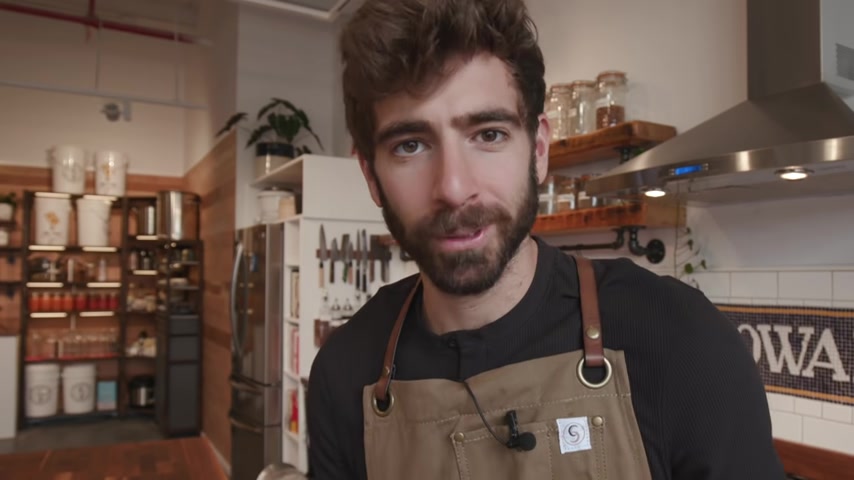
If you're doing the cooking , work that out beforehand because pasta can be a bit messy between the noodles and the sauce and you're going to have a much more enjoyable time knowing that you can just eat your meal in peace and they have to , I always find that those types of deals are pretty easy to make , especially now now that you have these new tips , your , your pasta game is going to be so strong that they , they'll clean .
No problem , believe me .
So make sure you follow me at life by Mike G on Instagram .
If you want more behind the scenes action , all the recipe testing that goes into these videos and let me know below what you want to see next .
What do you want me to break down in the next one ?
Dish breakdown ?
Are you looking for a way to reach a wider audience and get more views on your videos?
Our innovative video to text transcribing service can help you do just that.
We provide accurate transcriptions of your videos along with visual content that will help you attract new viewers and keep them engaged. Plus, our data analytics and ad campaign tools can help you monetize your content and maximize your revenue.
Let's partner up and take your video content to the next level!
Contact us today to learn more.